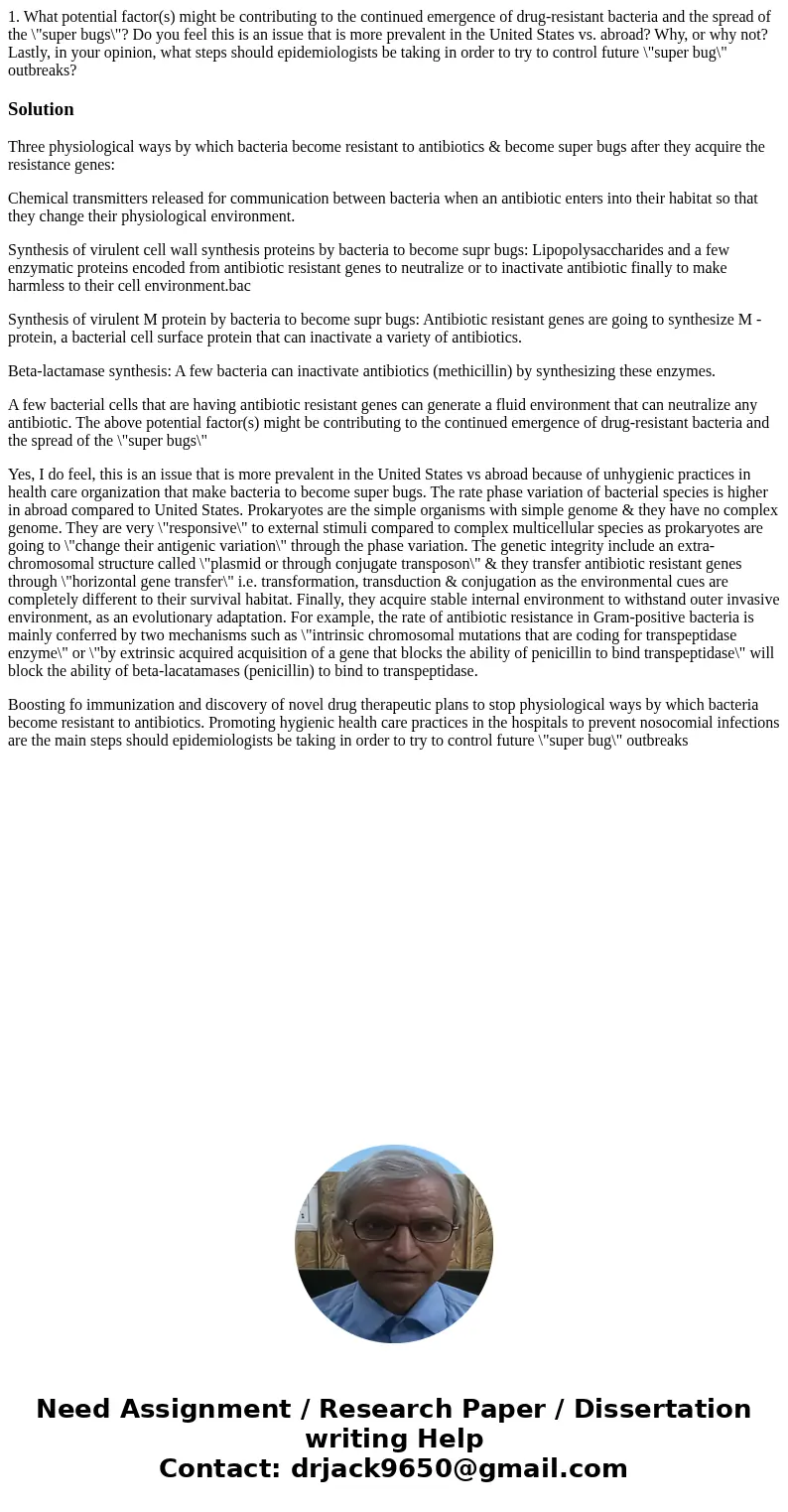1 What potential factors might be contributing to the contin
1. What potential factor(s) might be contributing to the continued emergence of drug-resistant bacteria and the spread of the \"super bugs\"? Do you feel this is an issue that is more prevalent in the United States vs. abroad? Why, or why not? Lastly, in your opinion, what steps should epidemiologists be taking in order to try to control future \"super bug\" outbreaks?
Solution
Three physiological ways by which bacteria become resistant to antibiotics & become super bugs after they acquire the resistance genes:
Chemical transmitters released for communication between bacteria when an antibiotic enters into their habitat so that they change their physiological environment.
Synthesis of virulent cell wall synthesis proteins by bacteria to become supr bugs: Lipopolysaccharides and a few enzymatic proteins encoded from antibiotic resistant genes to neutralize or to inactivate antibiotic finally to make harmless to their cell environment.bac
Synthesis of virulent M protein by bacteria to become supr bugs: Antibiotic resistant genes are going to synthesize M -protein, a bacterial cell surface protein that can inactivate a variety of antibiotics.
Beta-lactamase synthesis: A few bacteria can inactivate antibiotics (methicillin) by synthesizing these enzymes.
A few bacterial cells that are having antibiotic resistant genes can generate a fluid environment that can neutralize any antibiotic. The above potential factor(s) might be contributing to the continued emergence of drug-resistant bacteria and the spread of the \"super bugs\"
Yes, I do feel, this is an issue that is more prevalent in the United States vs abroad because of unhygienic practices in health care organization that make bacteria to become super bugs. The rate phase variation of bacterial species is higher in abroad compared to United States. Prokaryotes are the simple organisms with simple genome & they have no complex genome. They are very \"responsive\" to external stimuli compared to complex multicellular species as prokaryotes are going to \"change their antigenic variation\" through the phase variation. The genetic integrity include an extra-chromosomal structure called \"plasmid or through conjugate transposon\" & they transfer antibiotic resistant genes through \"horizontal gene transfer\" i.e. transformation, transduction & conjugation as the environmental cues are completely different to their survival habitat. Finally, they acquire stable internal environment to withstand outer invasive environment, as an evolutionary adaptation. For example, the rate of antibiotic resistance in Gram-positive bacteria is mainly conferred by two mechanisms such as \"intrinsic chromosomal mutations that are coding for transpeptidase enzyme\" or \"by extrinsic acquired acquisition of a gene that blocks the ability of penicillin to bind transpeptidase\" will block the ability of beta-lacatamases (penicillin) to bind to transpeptidase.
Boosting fo immunization and discovery of novel drug therapeutic plans to stop physiological ways by which bacteria become resistant to antibiotics. Promoting hygienic health care practices in the hospitals to prevent nosocomial infections are the main steps should epidemiologists be taking in order to try to control future \"super bug\" outbreaks

 Homework Sourse
Homework Sourse